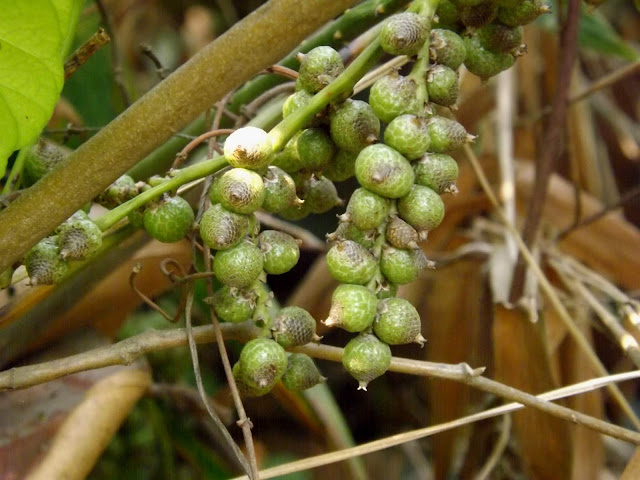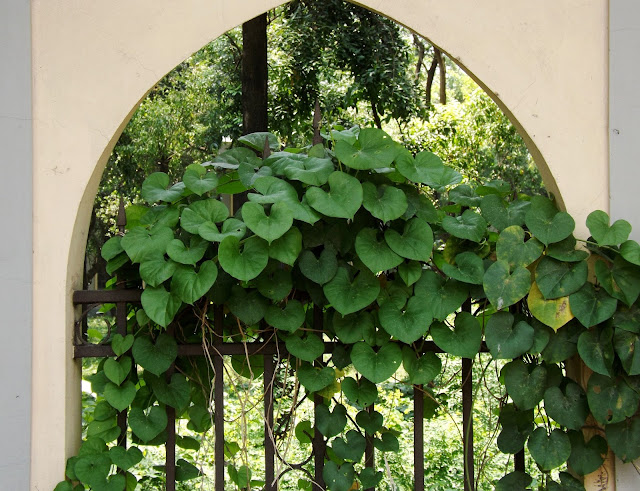Boro bet, Osier-like rattan palm, Calamaus viminalis
Boro bet or Osier-like rattan palm (Calamaus viminalis, family: Araceae) is a clump forming spiny large creeper, occasionally takes the form of bushes. Spines are flat and very long. By the support of other plants it climbs. Stem is slender, like most of the canes; brownish and covered with thorny sheath.
It is found mainly in the hill slopes of Chottogram, Chottogram Hill Tracts and Sylhet. It is also found in the Sal forests of Bangladesh. It has spiny climbing stem or tendrils to climb on; that will be 2-3 m long. Leaf sheath whitish green, pubescent, densely covered with hook-like stout spines. Rachis 1-2 m long. Leaflets are green, lanceolate, 30-55 in per side, alternate.
In Sal forest of Gajipur
Inflorescence is very long, 2-3 m, flagellate. Male and female flowers are borne in different inflorescence; female is shorter than male.
Fruits appear in cluster; berry, usually globose, yellowish or whitish, almost 1 cm in diameter, pointed end, covered with scale-like particles one after another; usually single-seeded. Fruits are edible. Children are very fond of it.
Flowers and fruits can be found round the year. The propagation of the plant is caused by seeds.
Handicrafts, tools as well as furniture are made from its cane. Young shoots can be eaten. The cane is found in India, Thailand, China, Myanmar and the other countries of Southeast Asia.








Comments
Post a Comment